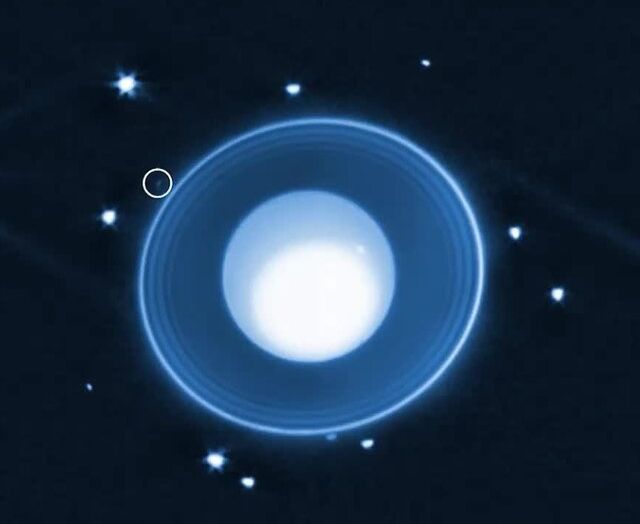 Image Source: The New York Times
Image Source: The New York Times
In a groundbreaking astronomical achievement, NASA has announced the discovery of the 29th moon orbiting Uranus, provisionally named S/2025 U1. Detected in February 2025 using the cutting-edge James Webb Space Telescope (JWST), the moon’s unveiling marks a milestone in our understanding of the solar system’s icy outliers and highlights Webb’s power to push the boundaries of deep space observation.
Key Highlights of the S/2025 U1 Discovery
S/2025 U1 was identified in a series of long-exposure images taken by the JWST’s Near Infrared Camera (NIRCam), making it the first Uranian moon discovered since the era of Voyager 2 nearly four decades ago.
The moon is estimated to be just 10 kilometers (about 6 miles) in diameter, an object so faint and small that it had escaped detection by previous telescopes and space missions, including the legendary Hubble and Voyager 2 flyby.
S/2025 U1 orbits at a distance of around 56,000 kilometers (35,000 miles) from Uranus’s center, nestled between the paths of two previously known moons, Ophelia and Bianca, and just outside the planet’s brightest Epsilon ring.
With an almost perfectly circular orbit taking about 9.6 hours, its path suggests it likely formed near its current location, rather than being captured by Uranus’s gravity from elsewhere in space.
The Science and Significance
The discovery provides fresh insights into Uranus’s inner moon system, thought to be a densely packed environment shaped by dynamic interactions, past collisions, and gravitational forces between moons and rings.
Scientists speculate that tiny moons like S/2025 U1—possibly remnants of former, larger satellites shattered by impacts—could play a crucial role as “shepherds” in shaping Uranus’s signature rings.
Maryame El Moutamid, who led the international research team, noted the nearly circular orbit and size make S/2025 U1 the 14th known inner moon of Uranus, emphasizing the potential for yet more small moons waiting to be uncovered in this intricate system.
The moon’s faint signature implies that Uranus’s ring-moon system is even more complex than previously realized, with astronomers now expecting further discoveries as JWST continues to study this enigmatic planet.
Naming and Future Exploration
S/2025 U1 is currently a provisional designation; by long-standing convention, Uranus’s moons are eventually named after characters from Shakespearean plays and works by Alexander Pope. The International Astronomical Union will approve an official name in the coming months.
JWST’s discovery opens the door to a new era in planetary science, allowing astronomers to study distant moons and ring dynamics in unparalleled detail and producing data critical for planning future missions to Uranus.
Researchers believe understanding moons like S/2025 U1 could also shed light on the history of ring systems and on processes that shape exoplanetary systems similar to Uranus.
Broader Impact and the Quest for Knowledge
Uranus remains one of the least-explored frontiers among our solar system’s giants, yet is now recognized as holding clues to both solar system evolution and planet formation processes.
The discovery’s significance is magnified by the fact that astronomers have long theorized the presence of additional small moons needed to account for the mysterious edges and behaviors of Uranus’s rings.
As the JWST continues its General Observer program, astronomers worldwide are hopeful that more hidden moons will be detected, each contributing a vital piece to the cosmic puzzle.
Conclusion
The identification of S/2025 U1, Uranus’s 29th moon, is a triumph of modern astronomy. It not only showcases the technological leap provided by the James Webb Space Telescope but also sparks renewed interest in the mysteries of Uranus’s remote neighborhood. As humanity peers deeper into the solar system, the story of this tiny moon is a powerful testament to the endless surprises the cosmos has to offer.
Sources: NASA, Wikipedia, New York Times, Universe Today
Advertisement
Advertisement



